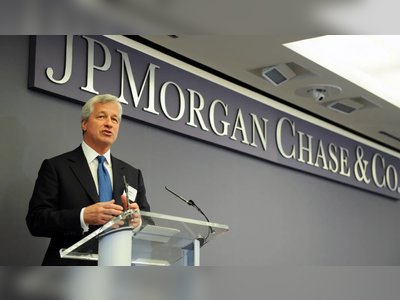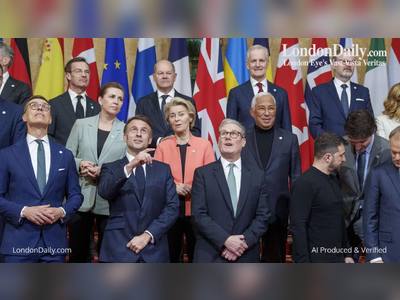IMF Warns UK Headed for G7-Highest Inflation Despite Upgraded Growth Outlook
International Monetary Fund cautions that inflation at 3.4 percent may become entrenched, placing pressure on monetary policy
The International Monetary Fund has delivered a stark caution for the United Kingdom: even as it modestly upgrades its 2025 growth outlook, inflation may remain entrenched and become the highest among the Group of Seven.
The IMF projects consumer prices will climb by 3.4 percent in 2025, before easing to 2.5 percent in 2026, but warns that strong inflation expectations and wage pressures could disrupt disinflation efforts.
In its latest update, the Fund raised the UK’s 2025 real GDP forecast to 1.3 percent, up by 0.1 percentage point, while trimming the outlook for 2026.
Despite this upgrade, the IMF emphasised that inflation is now a dominant risk: the UK is forecast to see the most persistent price growth among advanced economies over both years.
The Fund notes that factors such as rising labour costs, regulated energy and transport prices, and fiscal and regulatory decisions are likely to drive sustained inflationary momentum.
The IMF cautioned the Bank of England against hasty rate cuts, urging a “very cautious” approach to monetary easing to avoid undermining price stability.
Chief Economist Pierre-Olivier Gourinchas warned that accelerating inflation expectations among households and businesses could make the disinflation path stickier than anticipated.
In particular, the Fund said any premature easing risks unmooring inflation dynamics.
Among the factors behind the inflation warning are persistent upward pressure on wages and administered prices, which the IMF says risk becoming self-reinforcing.
The Fund also flagged that public expectations of higher inflation may lead to wage–price spirals.
It underscored that while some price rises may be transitory, the risk of inflation becoming entrenched now looms larger than before.
The UK government, for its part, welcomed the growth upgrade as confirmation of recovery momentum, while noting the inflation risks ahead.
The Bank of England, which most recently held rates steady, is now under intensified scrutiny: markets are increasingly split on when or whether it will begin easing policy.
Against this backdrop, the IMF’s guidance adds weight to calls for careful calibration in future rate decisions.
Policymakers now face a delicate trade-off: sustaining growth without sacrificing price stability.
With inflation expectations elevated, any loosening in monetary policy must be weighed against the potential for renewed inflation persistence, particularly in the context of tight labour markets and sticky regulated prices.
The IMF projects consumer prices will climb by 3.4 percent in 2025, before easing to 2.5 percent in 2026, but warns that strong inflation expectations and wage pressures could disrupt disinflation efforts.
In its latest update, the Fund raised the UK’s 2025 real GDP forecast to 1.3 percent, up by 0.1 percentage point, while trimming the outlook for 2026.
Despite this upgrade, the IMF emphasised that inflation is now a dominant risk: the UK is forecast to see the most persistent price growth among advanced economies over both years.
The Fund notes that factors such as rising labour costs, regulated energy and transport prices, and fiscal and regulatory decisions are likely to drive sustained inflationary momentum.
The IMF cautioned the Bank of England against hasty rate cuts, urging a “very cautious” approach to monetary easing to avoid undermining price stability.
Chief Economist Pierre-Olivier Gourinchas warned that accelerating inflation expectations among households and businesses could make the disinflation path stickier than anticipated.
In particular, the Fund said any premature easing risks unmooring inflation dynamics.
Among the factors behind the inflation warning are persistent upward pressure on wages and administered prices, which the IMF says risk becoming self-reinforcing.
The Fund also flagged that public expectations of higher inflation may lead to wage–price spirals.
It underscored that while some price rises may be transitory, the risk of inflation becoming entrenched now looms larger than before.
The UK government, for its part, welcomed the growth upgrade as confirmation of recovery momentum, while noting the inflation risks ahead.
The Bank of England, which most recently held rates steady, is now under intensified scrutiny: markets are increasingly split on when or whether it will begin easing policy.
Against this backdrop, the IMF’s guidance adds weight to calls for careful calibration in future rate decisions.
Policymakers now face a delicate trade-off: sustaining growth without sacrificing price stability.
With inflation expectations elevated, any loosening in monetary policy must be weighed against the potential for renewed inflation persistence, particularly in the context of tight labour markets and sticky regulated prices.











